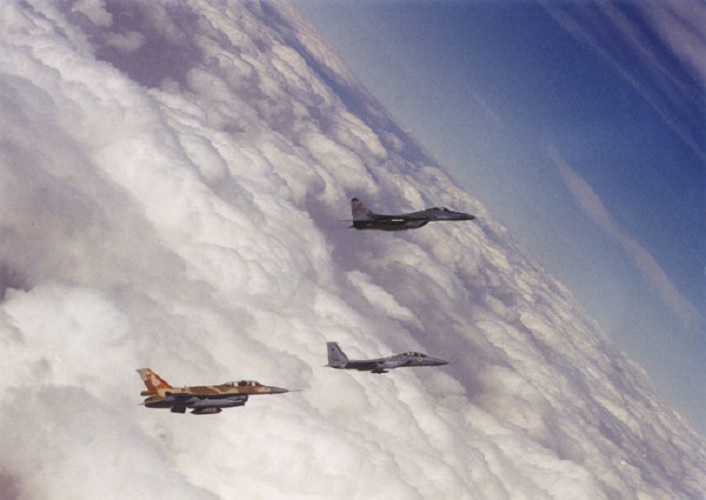In contrast to other frontline fighters from the past, the Israelis appeared unable to obtain a MiG-29 using clandestine methods. But with the end of the Cold War, it was now possible to test the jet by renting one, and they did it
Once the MiG-29 Fulcrum started to appear on Syrian land, the Israeli Air Force (IAF) was eager to obtain a first-hand look at its systems and capabilities.
Israel reportedly made a secret arrangement with a Polish general to acquire an almost finished, crated MiG-29. The aircraft was in Gdansk, ready to be transported to Syria, but in late 1985 it was put on a plane and brought to Israel. Soon after learning of this, the Soviets demanded its return. Around February 1986, the Israelis obliged because they were trying to improve relations with the Soviet Union at the time. Though it’s unlikely that much was accomplished during the episode, the airplane pieces had been examined and photographed.
In 1991, Israel borrowed a MiG-29 radar from Germany as part of a deal involving a sizable number of Soviet weaponry sold or lent to the Israelis, as detailed by Bill Norton in his book Air War On The Edge: A History of the Israel Air Force and its aircraft from 1947. These included modern T-72 main battle tanks (MBTs) that were sent to Israel but were mislabeled as “agricultural equipment” on official falsified shipment documents. The radar was from a former East German MiG-29 that had recently been made available to the West as a result of Germany’s reunification. The device was given back to its owner after a thorough technical analysis.
Although helpful, the radar analysis by itself did not give the IAF all the data they were looking for; only the full-up jet would do.

The Israelis appeared unable to set an example through clandestine measures, unlike other frontline combatants in the past. But with the end of the Cold War, it was now possible to test the jet by renting one. They did this. During the first half of the 1990s, Israeli pilots operated the jet in one or more East European nations and possibly in Germany. However, a thorough analysis would necessitate a test match against the front-line jets of the IAF.
In 1996 or 1997, a loan of three MiG-29s from an unspecified East European country (probably Poland) was arranged. The aircraft, reportedly including number 35105, appeared to have been early A models. Flown from several Negev air bases – probably including Ramon – the MiG-29s were wrung out during a two-week trial session in April 1997. Each jet reportedly made 20 flights. In addition to conducting mock battles with the F-15 and F-16, technical assessments of the helmet-mounted sight and infrared search-and-track systems were also conducted. These characteristics, as well as the entire aircraft, are said to have impressed the Israelis.
“MiG’s abilities equal and sometimes even exceed those of the F-15 and F-16 jets”, said Major N, one of the IAF pilots who flew the MiG-29. “The aircraft is highly maneuverable, and its engines provide a higher weight-to-thrust ratio. Our pilots must be careful with this aircraft in air combat. Flown by a well-trained professional, it is a worthy opponent.”
Major N was echoed by Lieut. Gen. M: “Flying the MIG was one-of-a-kind type of experience for a test pilot. Now I know that the result of air combat between the MIG and an Israeli fighter jet depends on how the combat develops. In a tight battle, it is a real threat. It’s an advanced aircraft, and in close maneuvering engagements, it is absolutely terrific. It makes sharp turns, it’s quick, and to my opinion, as a platform, it does not fall short of our advanced fighter jets.”
The evaluation was expensive, but it yielded important information on dangerous aircraft that had previously only been known from instances that had been seized.

All markings on the MiGs that identified who actually owned them were painted over. Curiously, the jets were not given Israeli national markings, perhaps as a requirement of the purchase. The markings of the F-16 253 Squadron (where the MiG-29s may have been hosted) and the Flight Test Center [# 104 and 110, respectively] were affixed to the tails of the aircraft.
Photo by Israel MoD

